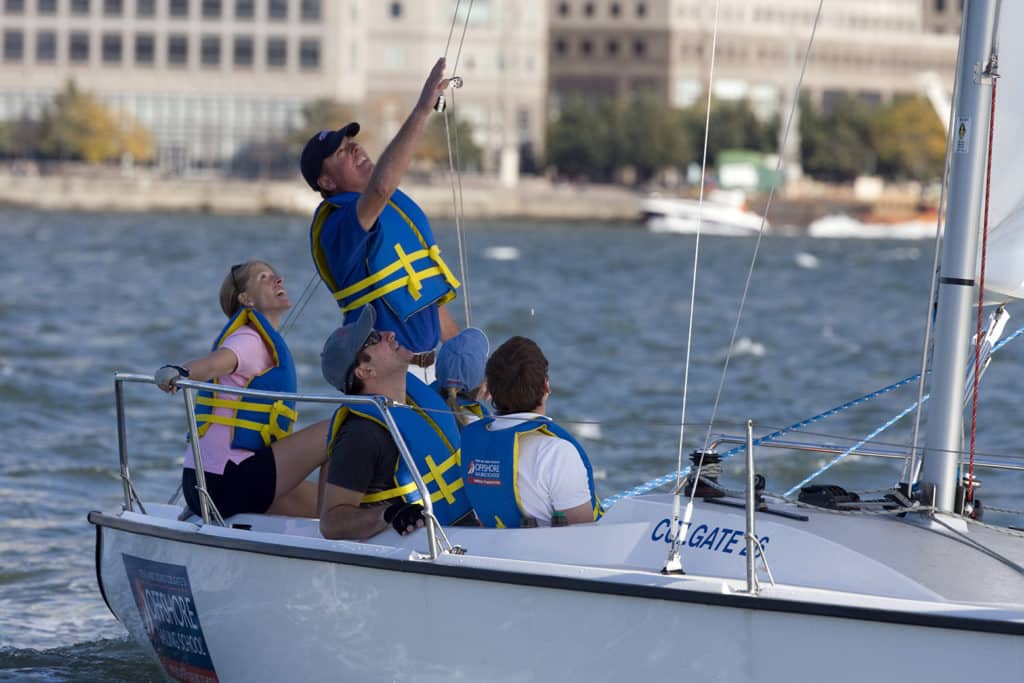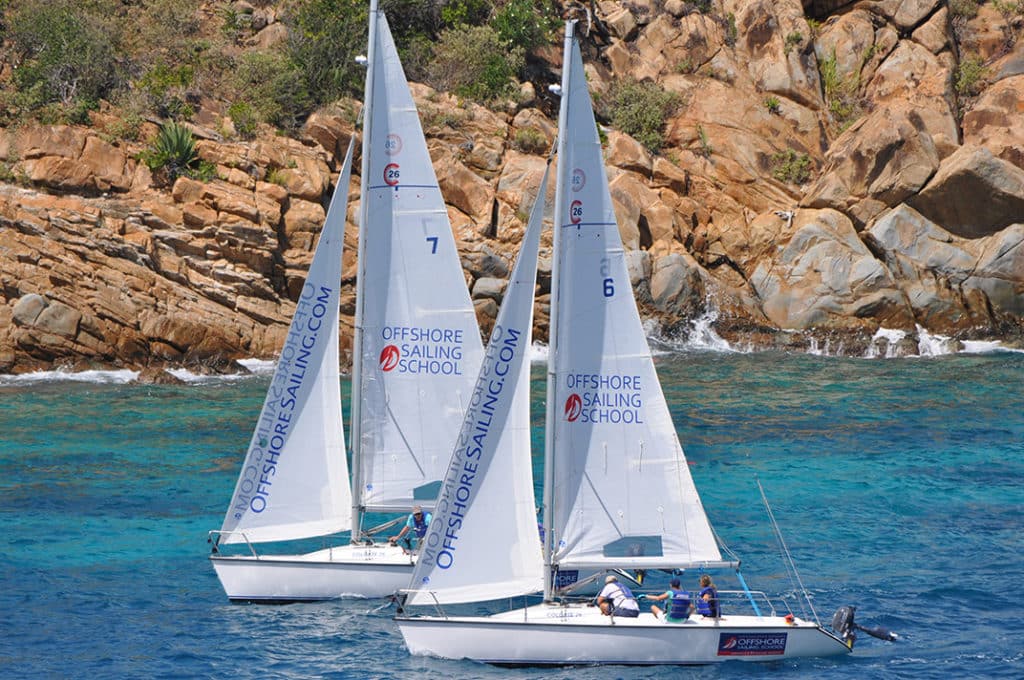The paths to learning the basics may be numerous, but the route to emerging a confident, knowledgeable sailor is singular. Instructors explain how to set a course that points you toward the right destination.
“Gee, I’d like to do that.”
A friend sends an invite, you see a movie, read a book, or stumble on a Facebook page full of smiling, tanned people with the breeze coursing through their hair. Somehow, sailing comes into your life and you want to know more.
Relax. Not only are you in good company, you’re lucky. You’ve entered a new, rich universe full of useful resources, expert knowledge and trusty crewmates to help you along the way.
“It was April 1968, during spring of my sophomore year in college,” says Tripp Alyn. “The boat was a 14-foot International Flying Junior dinghy. The person who invited me was a classmate who was in the sailing club. I knew nothing. It was an instant click. It changed my life forever.”
Individuals like Tripp Alyn, couples, families — they come in contact with sailing, they’re eager, but unsure of what to do next. “They don’t know how far they want to take it, but they want to get into it,” says Kevin Wensley, director of operations for Offshore Sailing School. “Whether it’s the relaxation of being outdoors, whether they’ve been to a yacht club regatta or heard of someone taking a boat in the Caribbean, they have dreams, aspirations, needs and goals. Now they need to learn.”
Options for beginners are many. Community sailing centers are an economical route. Many yacht clubs offer season-long instruction to members and guests. Standardized curriculums with certification levels are offered by a variety of groups including the American Sailing Association and U.S. Sailing, the governing body of the sport. Women-only courses, introductory day, evening and weekend lessons, weeklong vacation and family packages and online opportunities also exist.
As you choose, remember:
- Online courses are just part of the package. “Online courses put you a little bit ahead,” Wensley says. “But you still need to get out on the water.”
- Open yourself up to learning a new language. “Sailing is full of different vocabulary, a glossary that includes the parts of the boat, and your relationship to the wind,” says Alyn, who went on to become a lifelong sailor and an instructor for Offshore.
- Learn aboard the right boat. “You’re looking for a boat that gives a lot of feedback, and comfort, and security and stability of a bigger boat — something between 24 and 30 feet,” Wensley says. “The Offshore platform, the Colgate 26, is primarily designed to help people learn the nuances.”
- Sign on with the right teacher. “If you’re new to the sport, I strongly recommend you get someone who is actually a professional educator who knows how to share how sailing works,” Wensley says.
- Feel safe: “Equipment is key,” Wensley says. “Is there a routine maintenance program on the fleet? Remember to have personal safety gear: shoes, gloves, foul weather kit. The appropriate personal flotation device — the school should have that stuff.” As you embark on basic lessons, realize it’s an all-in adventure. “Sailing itself is a multi sensory experience,” Wensley says. “It’s high impact — it affects you in so many ways: mentally, physically, emotionally. In a few days, you can have an experience that is a thorough grounding in the knowledge of how sailing works.”
Click here for more information about Learn to Sail courses.
Click here for information about the Colgate 26.
Click here for more information about picking a sailing school.










